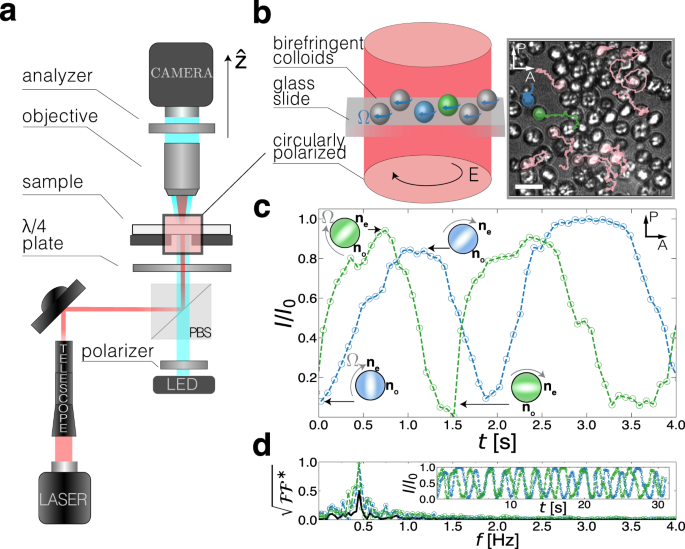2023-07-13 カリフォルニア工科大学(Caltech)
◆φX174は細菌を標的とするウイルスであり、細菌細胞にDNAを注入し、DNAを複製し、新しいウイルス粒子(ファージのコピー)を作り出し、細菌細胞の細胞壁を破壊し、他の宿主に感染させます。この研究によって、φX174が細胞壁を突破し、細菌細胞の死を引き起こすメカニズムが明らかにされました。この研究は、分子生物学の分野での実験的なツールとしてのφX174の有用性を示しています。
<関連情報>
- https://www.caltech.edu/about/news/little-phage-that-could
- https://www.science.org/doi/10.1126/science.adg9091
ファージがコードするφX174タンパク質の抗生物質のメカニズム The mechanism of the phage encoded protein antibiotic from φX174
Anna K. Orta,Nadia Riera,Yancheng E. Li,Shiho Tanaka,Hyun Gi Yun,Lada Klaic, and William M. Clemons Jr.
Science Published:14 Jul 2023
DOI:https://doi.org/10.1126/science.adg9091
Editor’s summary
With the progressive loss of effective antibiotics against many bacterial pathogens, phage therapy has attracted renewed interest as a means of treating infections. Some phages generate antimicrobial proteins that result in lysis of their host cells. Orta et al. determined structures of the “YES” complex, consisting of the phage protein E and two proteins involved in cell wall biosynthesis, MraY and SlyD (see the Perspective by Balbach and Stubbs). Protein E blocks a substrate-binding site in MraY, thus blocking its essential enzyme activity. A better understanding of this mechanism may be useful in developing effective phage therapeutics. —MAF
Structured Abstract
INTRODUCTION
As part of their life cycle, viruses must escape from their hosts. For bacteriophages, this process requires breaching the bacterial cell wall and the peptidoglycan layer. Small, single-strand DNA and RNA phages have evolved single-gene lysis proteins that disrupt peptidoglycan biosynthesis and trigger cell lysis, a mechanism also used by some antibiotics. The best-studied of these is protein E from the historically important phage ΦX174, a 91–amino acid protein that contains a conserved N-terminal transmembrane helix and an extended cytoplasmic C-terminus.
RATIONALE
Mutagenesis studies have demonstrated that the protein E transmembrane domain is sufficient for lysis, with functional mutants mapping to one face of the single transmembrane helix. The strongest phenotypes were observed for conserved prolines in this domain of protein E, with one proline being essential for lysis. Wild-type protein E requires the constitutively expressed bacterial chaperone SlyD (sensitivity to lysis D), which contains a prolyl isomerase domain and a chaperone domain. Previous work had identified mutants in MraY that confer resistance to protein E–mediated lysis. MraY catalyzes the synthesis of a peptidoglycan precursor from a soluble nucleoside-sugar-peptide and a phospholipid substrate. Although many functional questions remain about MraY, here we sought to understand how a phage protein could specifically inhibit this key enzyme and what role SlyD performed in the process.
RESULTS
We established that phage protein E forms a stable complex with the Escherichia coli proteins MraY and SlyD, designated the YES complex (MraY, protein E, SlyD). After solubilizing in detergent, we determined structures of the YES complex by single-particle electron cryo–microscopy. In our structures, the MraY dimer adopts a back-to-back orientation with the membrane-exposed active sites facing away from each other. Two SlyD molecules can be fit into the density on the cytoplasmic side. The two MraY and SlyD chains are bridged by two protein E molecules. The transmembrane helix of protein E occupies a groove on MraY corresponding to the putative binding site of the lipid substrate. At the cytoplasmic surface, the transmembrane domain of protein E bends to cross the active site, followed by an α-helix that extends to the chaperone domain of SlyD. The C-terminus of protein E continues through a peptide-binding groove in the second SlyD and into the prolyl isomerase active site. The consequence is that protein E inhibits MraY by blocking lipid access to the active site. Previous protein E mutant phenotypes are explained by the structure including the essential proline that allows for a kink in the transmembrane helix. For MraY, we can resolve the full chain including the conserved loop between TM1 and TM2. We show that the N terminus of MraY forms an α-helical stack with TM2 and identify ordered lipids on the protein surface. Finally, we provide evidence that the role of SlyD is to stabilize the complex.
CONCLUSION
Protein E directly inhibits MraY by obstructing the MraY active site in a stable complex with SlyD. This structure resolves key questions about how the model phage ΦX174 kills bacteria and escapes the cell. In the ΦX174 genome, the gene encoding for protein E is evolutionarily constrained by gene D, in which it is embedded. The YES complex provides a route for the rational design of protein E beyond this gene D restraint. Single-gene lysis proteins, like protein E, serve as useful models for the development of antibacterial therapies.
The escape of ΦX174 from its bacterial host.
In the membrane is the YES complex [E. coli enzyme MraY (cyan), phage protein E (yellow), and E. coli chaperone SlyD (purple)] where protein E disrupts peptidoglycan synthesis by inhibiting MraY and allowing breaching of the cell wall (tan). Assembled ΦX174 phage particles are shown in gray. In the background are bacterial cells that are lysing at their septal division point.
Abstract
The historically important phage ΦX174 kills its host bacteria by encoding a 91-residue protein antibiotic called protein E. Using single-particle electron cryo–microscopy, we demonstrate that protein E bridges two bacterial proteins to form the transmembrane YES complex [MraY, protein E, sensitivity to lysis D (SlyD)]. Protein E inhibits peptidoglycan biosynthesis by obstructing the MraY active site leading to loss of lipid I production. We experimentally validate this result for two different viral species, providing a clear model for bacterial lysis and unifying previous experimental data. Additionally, we characterize the Escherichia coli MraY structure—revealing features of this essential enzyme—and the structure of the chaperone SlyD bound to a protein. Our structures provide insights into the mechanism of phage-mediated lysis and for structure-based design of phage therapeutics.



